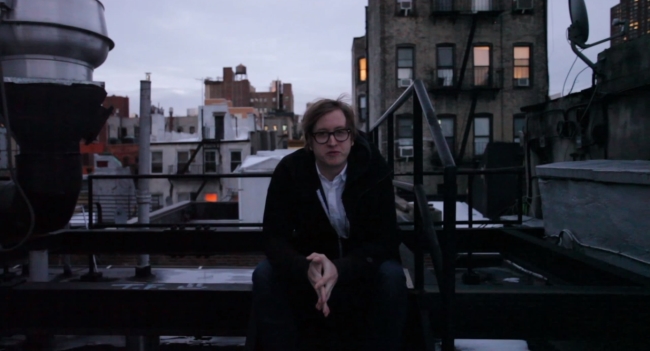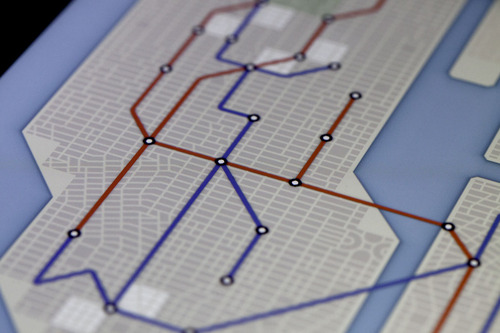From Double Fine to the D Train: The Making of Third Rail

Joe Kowalski is no stranger to the games industry. Best known for designing the logos for Guitar Hero and Rock Band as well as the innovative menus for Brutal Legend, Kowalski made the decision in 2011 to move from San Francisco to New York City, continuing to work remotely as a user interface designer for Double Fine.
And in April of this year, he joined the growing ranks of many former triple-A developers bred on big budget, mainstream games:
He went indie.
“But New York is the place I belong, and I feel more certain of that every day. Over the past two years, I’ve met a lot of amazing indie developers here. Now I’m one of them.” –Third Rail website
Kowalski’s new game is Third Rail, a competitive turn-based subway-building strategy game for iOS. In the game, up to six players take turns building out their hypothetical subway lines and stations on both real and fictional subway maps. Whoever serves more of the population wins, but subway lines can’t cross one another. With a stark, crisp aesthetic, the focus on Third Rail’s interface design is obvious.

Raised across a smattering of East Coast states, Kowalski frequently visited New York. But it wasn’t until he moved there for good that he faced learning the subway. Confusion turned to inspiration after he read up on the capitalistic origins of NYC’s subway system – with the competing IRT, BRT and BMT lines before they were unified under the city – and the first seeds for the game were planted.
Kowalski began prototyping the game on paper and playtesting with friends until the time was right to bring in help. At one of the city’s local game dev meetups he met Kevin Chen, a freelance programmer finishing up a contract who just so happened to be looking for a new project. The Third Rail team was off and running.
Work on the iOS version began in the summer of 2011 and was estimated to be completed in March 2012.
Two years later, the game is finally set to launch this summer.
“I guess it’s a bad thing, but both Joe and I are perfectionists.” –Kevin Chen
The indie life is a complicated product of the modern games industry. While the rare successes are widely publicized, many indies find themselves forced into the position by dint of layoffs, a shrinking pool of hiring employers, or an insatiable love of games that refuses to exchange creative fulfillment for financial stability. What could compel a successful artist and developer, working at one of the best-loved studios in the world, to trade it in for the indie life?
Joe Kowalski: “I had wanted to be on my own for a while… the reason why I lasted as long as I did was that the studios [where I worked] allowed everyone to have a say in the creative process. Harmonix and Double Fine were really good about it. If I was still living in San Francisco it would’ve been harder to leave Double Fine; it’s a really awesome environment with lots of super talented people under one roof.”
“But ultimately, I knew I wanted to come out to New York.”
And so far, New York has left its mark on Kowalski. Aside from providing the initial inspiration for Third Rail’s premise and gameplay, the city’s unique development community has exposed him to a vibrant scene ripe with potential.

JK: “I’ve always worked at studios and never really dipped into the culture. In New York, there are not a lot of places that really scoop up talent and give them full-time jobs, and that might be what gives it an interesting feel.”
Kevin Chen: “Just the task of getting a whole bunch of talented people together to make a game [in San Francisco] is hard. But here, there are a whole bunch of talented people sort of milling around looking for projects.”
JK: “There seems to be a really exciting games scene here, with Babycastles putting on gaming scene events, the NYU Game Center constantly putting on events… It seems like a place where a company that has a lot of goodwill among the indie scene would do well.”
It’s too early to tell how Third Rail will be received. But since the game’s levels can easily be expanded with new subway maps, Kowalski and Chen plan on post-launch support with new cities, content and updates – all for free. The aim, Kowalski says, is to keep giving people reasons to come back to play, to tell their friends.
JK: “I think it’s a better strategy than nickel-and-diming them… Just trying to make something I feel good about as a product is something I want to do.”
